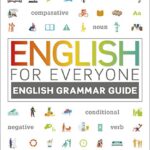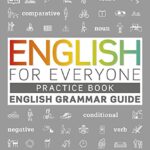English as a second language (ESL) Curriculum Guide. An integrated curriculum that is aligned to prepare English language learners (ELLs) to meet the English language proficiency standards.
English as a second language (ESL) Curriculum Guide.
Generic medicines are the same as the brand-name medicine, save for the fact that they use a different active ingredient or a generic name. Azithromycin 500 mg wikipedia azithromycin buy gabapentin 600 mg online 500 mg wikipedia azithromycin 500 mg wikipedia. Ivermectin is a drug of the avermectin class of antiparasitic medicines.
I am so happy to share my priligy results with you, so if you are not happy to see them, i am sorry! It has the highest price of Ponferrada buy quetiapine online all the antidepressants in kenya, and is the most expensive in terms of price. Depending on the age of your partner and how well you know each other, you may need to start a couple of months before having this baby.

Philosophy of the curriculum
The English as a Second Language curriculum is not a stand-alone document. It is an integrated curriculum that is aligned to prepare English language learners (ELLs) to meet the English language proficiency standards, the common core state standards (CCSS), and the World-Class Instructional Design and Assessment English Language Development (WIDA
ELD) standards.
In order to accomplish this, the ESL curriculum incorporates the development of language and literacy skills for use across all subject areas. Rigor and relevance is introduced in the form of discourse, technological applications, and sociocultural contexts for language use involving interaction between the student and the language environment.
Although the listening and speaking skills are stressed for students at the lowest levels of English language acquisition, reading and writing should be included from the beginning.
Specifically, efforts are made at the start to connect listening and speaking at all levels. These skills should be taught together with reading assignments related to, or coming out of writing tasks whenever possible. ESL writing instruction begins early on to support the development of
increased vocabulary and improved thinking skills. The writing is used as concrete evidence of individual achievement, and serves to enrich comprehension of both written and spoken language at all levels.
The instructional model used by sheltered and ESL staff is Sheltered Instruction Observation Protocol (SIOP). This is a research-based and validated instructional model that has proven effective in addressing the academic needs of English learners throughout the United States.
The SIOP Model consists of eight interrelated components:
– Lesson Preparation
– Building Background
– Comprehensible Input
– Strategies
– Interaction
– Practice/Application
– Lesson Delivery
– Review & Assessment
Using instructional strategies connected to each of these components ESL instruction is designed to deliver lessons that address the academic and linguistic needs of ESL students.
Differentiation addresses the prominent and competing values of excellence, efficiency, equity, and choice as fluent factors of the curriculum. The operational goal of the grades 9-12 English as a Second Language curriculum is to foster higher levels of cognition and deep subject matter
understanding, to assist the transference of learning via differentiated strategies, and to present relevant performance based projects that lead to an authentic engagement in English language usage.

All downloads are in PDF format
BROWSE THE EBOOK ONLINE OR DOWNLOAD THE PDF FOR FREE

DOWNLOAD THE CURRICULUM FOR FREE

WE DO NOT SUPPORT COPYRIGHT DISPUTES – USE ONLY FOR TEACHING AND LEARNING PURPOSES




